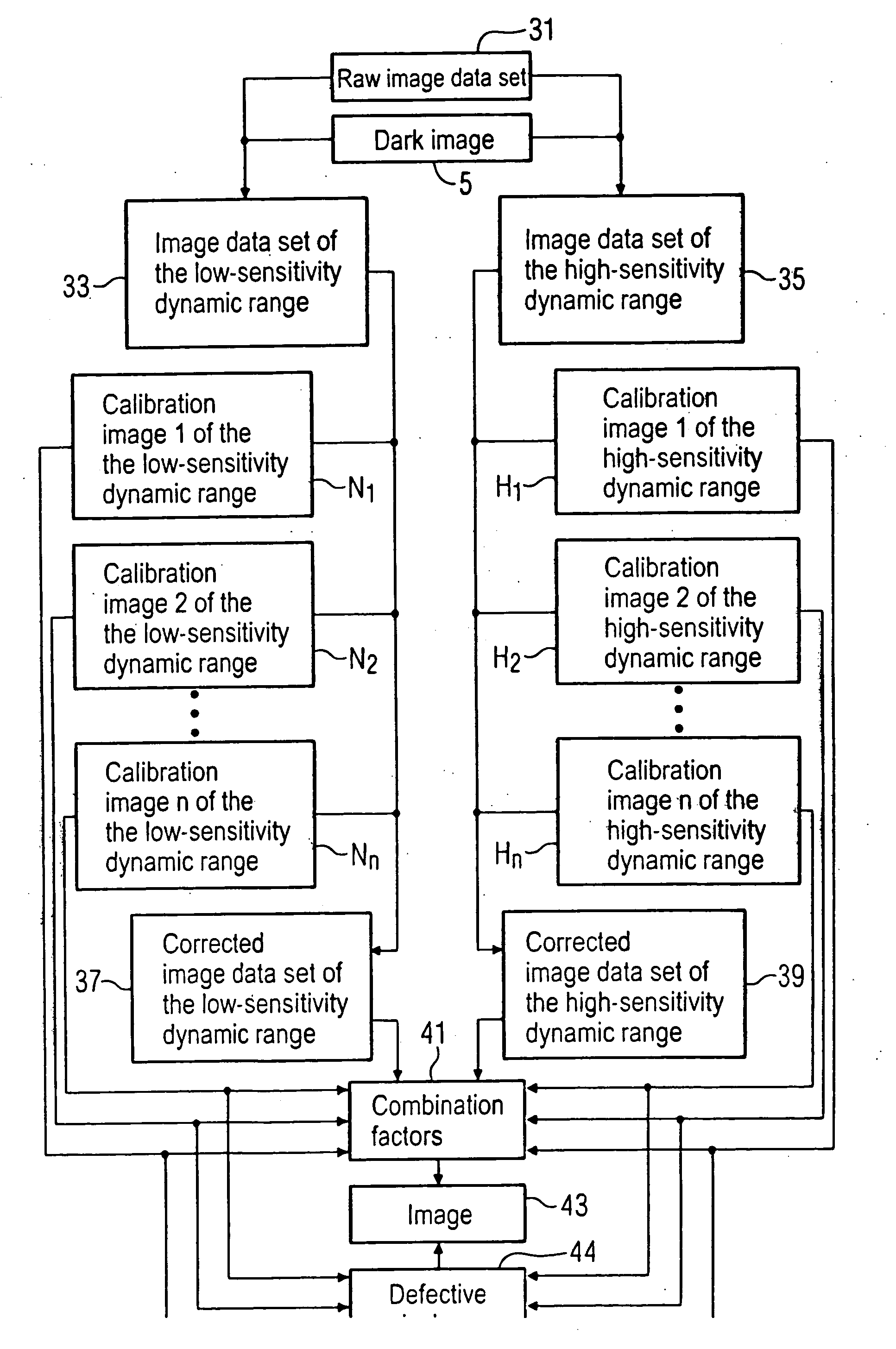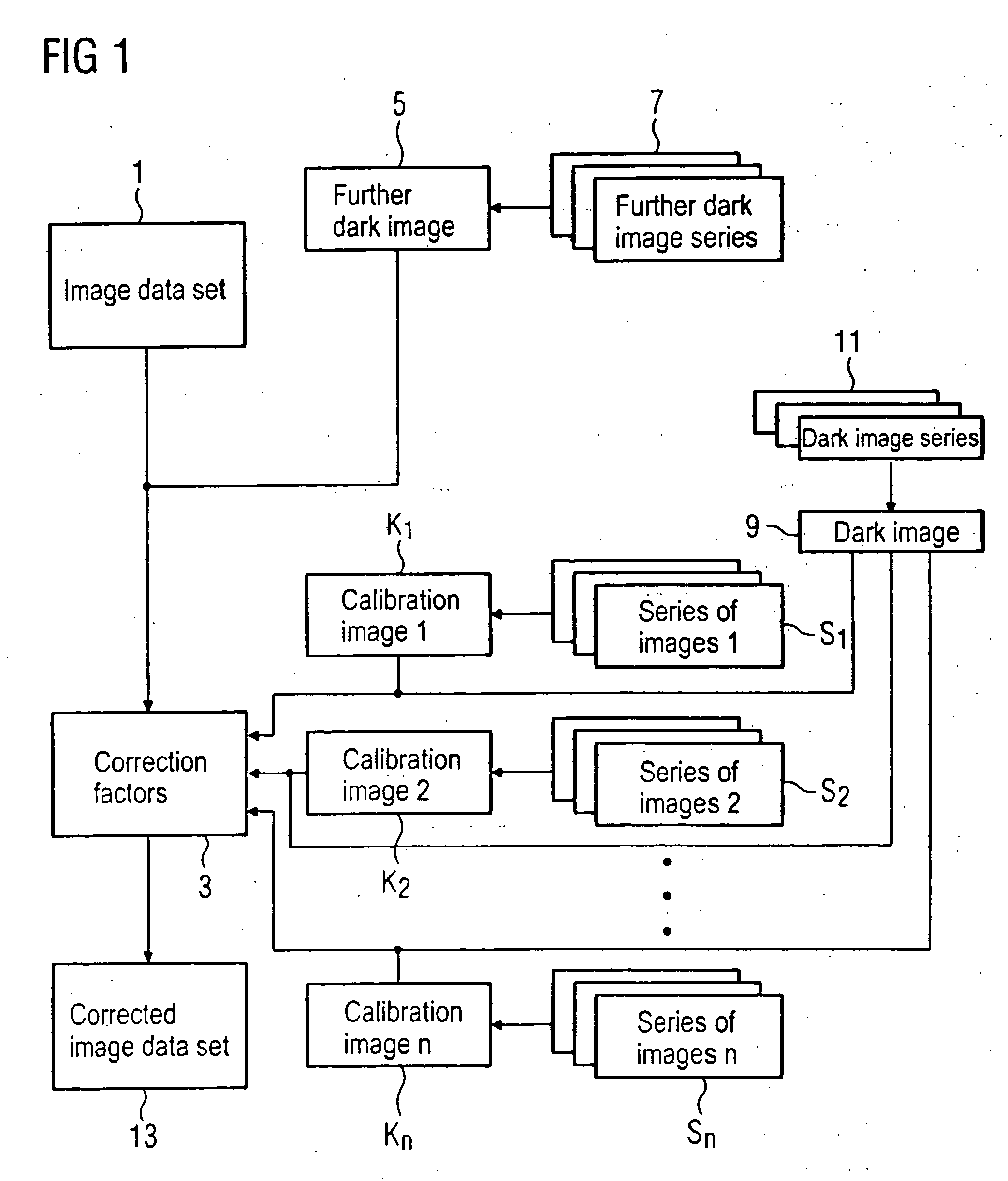Method for correcting an image data set, and method for generating an image corrected thereby
a technology of image data and generating method, which is applied in the field of generating image correction thereby, can solve the problems of sensitivity dynamic range, significant quality limitations of image data set, and rapid saturation of incident radiation energy with increasing incident radiation energy, and achieve the effect of improving the generation of imag
- Summary
- Abstract
- Description
- Claims
- Application Information
AI Technical Summary
Benefits of technology
Problems solved by technology
Method used
Image
Examples
Embodiment Construction
[0066] A method for correction of an image data set 1 that was acquired with a planar image detector is explained in FIG. 1 using a block diagram. In an actual image correction method the pixels of the image data set 1 (in which a subject was acquired with the planar image detector and the pixels of which exhibit different image intensity values) are multiplied with respectively one correction factor 3 in order to obtain a corrected image data set 13. In this correction method the different sensitivities of the individual detector pixels are compensated.
[0067] The correction factors 3 necessary for this are determined with the aid of a plurality of calibration images K1, K2 . . . Kn that were acquired in a preliminary process. The calibration images K1, K2 . . . Kn are thereby what are known as light images, i.e. images in which the planar image detector is exposed without a subject in the beam path absorbing x-rays. The different calibration images K1, K2 . . . Kn have thereby bee...
PUM
 Login to View More
Login to View More Abstract
Description
Claims
Application Information
 Login to View More
Login to View More - R&D
- Intellectual Property
- Life Sciences
- Materials
- Tech Scout
- Unparalleled Data Quality
- Higher Quality Content
- 60% Fewer Hallucinations
Browse by: Latest US Patents, China's latest patents, Technical Efficacy Thesaurus, Application Domain, Technology Topic, Popular Technical Reports.
© 2025 PatSnap. All rights reserved.Legal|Privacy policy|Modern Slavery Act Transparency Statement|Sitemap|About US| Contact US: help@patsnap.com



